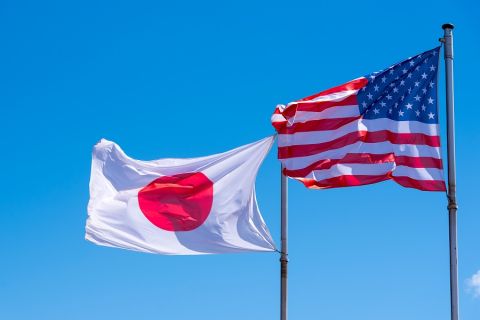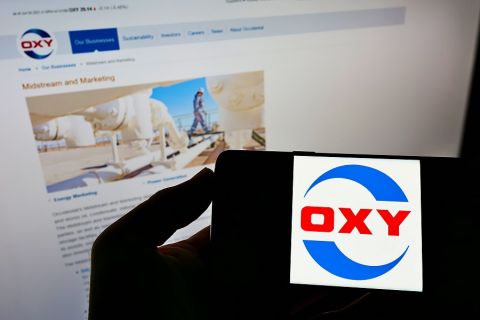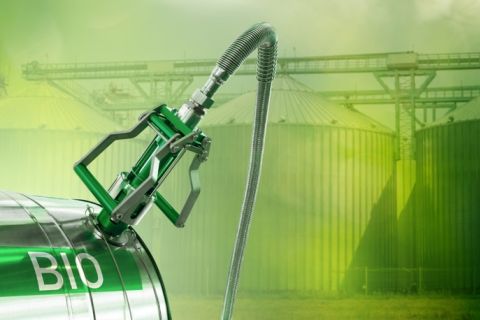Strong oil prices and the need for operating companies to use the latest generation rigs for both deepwater and shallow-water drilling have been driving an unprecedented boom in rig-building for several years now.
There always has been a strong correlation between the oil price and rig orders. But since Macondo and the ripple effect it created, all offshore operators also have accepted the very real threat of the long-term damage that can happen if a company is seen, or even suspected of, not being fully committed to the principles of absolute safety and environmental responsibility.
However, as the industry moves beyond that initial spur caused by the tragedy in the Gulf of Mexico (GoM), the improvement in drilling performance and productivity also has demonstrated the straightforward business sense that exists behind securing newer, more capable high-specification units. These units can enable operators to find and produce oil and gas deeper, faster, and more efficiently than was thought possible just a few short years ago.
This has been aided by the opportunistic ability of the rig companies to make the most of the current weakness in the wider shipbuilding industry to order new drilling units from yards at very attractive price levels.
Checking out the leading players in the rig-build segment of the high-flying ultra-deepwater market reveals that although there may be some short-term slow-down in terms of day rates and use as a plethora of sixth- and seventh-generation newbuilds hit the market this year and next, the long-term view remains very much the same.
Market bifurcation
There is the potential issue of how the market might bifurcate in the future between older, less capable units and newer, higher specification units as operators high-grade equipment and absorb newbuild capacity, leaving older units to experience softer rates and lower utilization.
But the views vary among the major players themselves as to what impact any bifurcation might have.
Perhaps the biggest exponent of the ultra-deepwater rig sector is Seadrill. The company is headquartered (like several rivals, including Transocean and Ensco) in London, which has become something of a global hub for rig companies thanks to the city’s attractive taxation rates, stable fiscal regime, and convenient geographic location for international market activities.
In its most recent results presentation the company stated that the fundamental outlook for the offshore drilling industry as a whole remains positive. “The trend seen during the last few years in which the major oil companies focus their E&P investments on deepwater areas is likely to continue. At the same time, oil and gas companies continue to demonstrate their preference for newer, more capable rigs. Sixth-generation ultra-deepwater floaters are preferred for their greater efficiencies, dual BOP capabilities, higher variable deckloads, and increased lifting capacities,” the company said in its quarterly financial report.
Seadrill believes there will be a split in the market between the newer and older units. “Over the long term we expect the market to increasingly demonstrate bifurcation in terms of both dayrate rate and utilization for newer, more capable rigs over older commodity assets.”
Newbuilds to be absorbed
But is this a problem? Not for the ultra-deepwater rig market, according to Seadrill. It said in its quarterly report that this section of the market is maintaining its pace in terms of tendering and contracting activity, with no remaining new-build capacity available in 2013 and availability of units in 2014 already cut by half. According to Seadrill, for 2014 the number of available newbuilds has been reduced from 20 to 10, with a number of other awards still pending. “We are confident that the current newbuild order book will be effectively absorbed into the operating fleet,” the company stated. Regional factors highlighted by Seadrill as key to continuing ultra-deep demand include:
- Africa. In Angola and Nigeria a backlog of exploration work and several large discoveries to be developed are expected to result in a sharp increase in drilling activity. The company also expects to see increasing activity in East Africa’s Mozambique, Tanzania, and Kenya;
- Brazil. A desire by Petrobras to high-grade its floater fleet leaves Seadrill confident that the operator will continue to require the services of at least its existing fleet of high-specification floaters. The report points out that the first block auction in five years raised a record US $1.2 billion, with most of the blocks in frontier regions or unexplored areas;
- US GoM. The region is seeing an increasing amount of development work as the market returns to normal following Macondo. Currently, out of 33 ultra-deep rigs, 23 are working on exploration projects. “We expect development work to accelerate, leading to longer duration drilling contracts,” Seadrill said; and
- Northern Norway, Russia, and the Arctic. The market for harsh-environment drilling rigs remains very tight, and increasing demand in these regions is expected to tighten further.
All of this market promise spurred Seadrill to order four ultra-deep drill-ships in July from the Samsung and Daewoo Shipbuilding and Marine Engineering (DSME) yards in South Korea for an estimated project price of less than $600 million per rig, with deliveries scheduled for the second half of 2015. The company also took yard options on two more.
This quartet of drillships will have a hookload capability of 1,250 tons and a water depth capacity of up to 3,658 m (12,000 ft), targeting operations in areas such as the GoM, Brazil, and West and East Africa. Also, these units will be outfitted with a 7-ram configuration of the BOP stack and with storing and handling capacity for a second BOP. The units include design and equipment features that will make them particularly attractive for development drilling, Seadrill said.
For two of the drillships, the company also has received options to include equipment that makes the units prepared for 20,000-psi BOP systems, a requirement that will become increasingly common for newbuilds. It’s also worth pointing out that since January Seadrill has, including the acquisition of Sevan Drilling, added a total of nine deepwater assets to its fleet. This means that currently 94% of its floater fleet is made up of sixth-generation ultra-deepwater units. The company has a construction program totalling 22 units, including nine drillships and two harsh-environment semisubmersibles.
Long-term performance
The longer term background performance of the market reflects the reasons for the company’s belief in it. The offshore drilling sector has absorbed approximately 261 new units since 2005, and the use of the ultra-deepwater fleet has been at 100% since Seadrill was first established in that year. In the same period, however, offshore production has been estimated to be marginally down.
The company stated in its latest quarterly report, “This illustrates in very simple terms the increased complexity of the development of new oil and gas reserves. Seadrill has spent significant time and effort analyzing the future demand of the ultra-deepwater drilling market. Ultra-deepwater production is estimated to increase from around 1 MMb/d today to 5 MMb/d over the next six years.
“To reach this target, significant new development drilling capacity will have to be added. At the same time, the industry faces a situation where approximately 49% of the current floater fleet is older than 20 years. We already have seen a strong trend where fourth- and fifth-generation vessels are incapable of meeting oil companies’ new requirements for safety margins and deckload capacity and are being replaced with newer units.”
Transocean’s take
Rig giant Transocean is another market player sure of the ultra-deep market’s longevity. Speaking during the company’s latest results webcast for analysts in September, Vice President Terry Bonno said, “Our confidence in the long-term future of the ultra-deepwater market continues to be confirmed by the customer interest in the remaining fleet available in 2013 and into 2014. The tendering pace picked up in the deepwater market after a quiet first quarter, and we are currently in discussions with several customers for the available fleet.”
She added that there could be some potential short-term overcapacity in the market. “While the pace of fixtures has moderated, we see ample market opportunities to absorb all of the available capacity over the next several years. While the deepwater market utilization remains [more than] 90% today, we’re seeing some potential for incremental idle capacity in the near term.”
Discussing this potential short-term overcapacity in the sector, she commented on the sheer number of uncommitted units still available, with 20 new contracts already awarded for ultra-deepwater drilling units during the second quarter. “If you look at 2014 in particular, you end up with a number that we haven’t seen in the industry ever. There are 42 rigs. I think there are about 14 newbuilds that need to be placed, and the rest is a rollover fleet. As we go back to 2008, I think we’ve averaged about 20 to 25 that have been absorbed by our customers. So I think the number’s just a little bit concerning.”
Transocean has been around for a long time as one of the most established offshore drillers in the world and is another company at the forefront of the ultra-deepwater drive, backed by being the current world record-holder for a well drilled in the deepest water depth. This summer the drillship Dhirubhai Deepwater KG1 set a new record by drilling in 3,174 m (10,411 ft) of water while
working for ONGC off India’s east coast. This surpassed Transocean’s own prior record of 3,165 m (10,385 ft), also set by the KG1 while working for ONGC earlier in the year.
Ultra-deep ‘the right bias’
Transocean CFO Esa Ikaheimonen, speaking during the Barclays CEO conference in September, said the company believes a continuing focus and bias toward ultradeepwater “is the right bias,” with its current newbuild program including a total of seven rigs, six of which are ultra-deepwater drillships and all of which are on longterm contracts with customers already. He went on to point out the high volume of exploration success around the world, with up to 80% of the discovered new volume coming from deep water.
Ikaheimonen also touched upon the issue of bifurcation and was clearly less than convinced about its likely effect. “People talk about bifurcation. My personal view is that it’s a bit overblown, and we need some further evidence that it is truly happening. But it is true that some lower specification ultra-deepwater units will be ‘competing down,’ mostly because of customer preference for modern and brand new rigs. They are likely to earn a slightly lower day rate than the $550,000 to $600,000 a day level that we see continuing in this market for the sixth- and seventh-generation rigs,” he said, as quoted on Seeking Alpha. “But as I said, some of the recent features actually would strongly speak against any bifurcation implication such as the Deepwater Millennium at $605,000 a day and the Cajun Express at $600,000 a day. But there is a customer preference that is likely to have a little bit of an impact, and potentially some of the fifth-generation ultra-deepwater rigs will be contracted at a slight discount.”
Ocean Rig’s perspective
Ocean Rig UDW Inc. is an ultra-deepwater specialist that has recently signed several lucrative contracts, including one with Total to use its drillship Ocean Rig Apollo offshore West Africa in a three-year deal worth approximately $677 million. It also entered into a contract with the same operator for a five-well program for its drillship Ocean Rig Skyros to drill off West Africa in a contract worth approximately $190 million.
Ocean Rig also received a letter of award for the same drillship for a six-year contract for drilling offshore West Africa, with an estimated order backlog value of approximately $1.3 billion. With these deals the company’s fleet is effectively fully contracted through 2014.
George Economou, chairman and CEO, was quoted in the company’s press release as saying, “We believe that the ultra-deepwater drilling market for high-quality assets will remain strong in the foreseeable future as indicated by the high level of demand we are continuing to witness.
“After multiple large offshore discoveries, the industry moves into the development stage of the well cycle, which is expected to result in more technically complex projects and longer term contracts.”
Standardization
Ocean Rig is a firm believer in the benefits of standardization, with four sixth-generation drillships and five seventh-generation newbuild drillships under construction at the Samsung Heavy Industries shipyard in South Korea.
These sister drillships share much in the way of common equipment, spare parts, and training standards, among much else. They also have up to 12,192-m (40,000-ft) drilling depth capability with 6- and 7-ram BOPs and water depth capabilities of up to 3,048 m and 3,658 m (10,000 ft and 12,000 ft), respectively.
Ocean Rig said the supply of ultra-deepwater newbuild rigs available for employment in the market will peak in 3Q 2014, with 12 units having found employment from June to August, according to a presentation at the Barclays CEO event.
The company also flagged the aging midwater and deepwater fleets, where it said there was a significant shortage of high-specification assets in the market. The ongoing increase in demand is stretching this aging and under-invested fleet, according to the presentation, which stated that the “vast majority of midwater and deepwater floaters are more than 20 years old and becoming obsolete.” It added that the stringent post-Macondo technical requirements are creating a cascading effect in the market, meaning many ultra-deepwater units are drilling deepwater wells at ultra-deepwater rates.
Ensco’s newbuild drive
Ensco is another of the top-tier rig companies on a newbuild drive that shows little sign of abating, recently adding another drill-ship to its queue of ultra-deepwater units on order from Samsung Heavy Industries at a cost of $625 million.
The advanced-capability dynamic positioning Class 3 (DP3) drillship will be another based on the Samsung GF12000 hull design. The vessel, Ensco DS-10, will be the eighth Samsung DP3 drillship in Ensco’s fleet. This unit, along with the Ensco DS-8 and Ensco DS-9, is based on the GF12000 hull design. Ensco said it is currently the only drilling contractor offering the advanced features of the GF12000 hull design.
Chairman, President, and CEO Dan Rabun said in a press release that operators are showing high interest in this iteration of the Samsung DP3 drillship due to its advanced design and capabilities that improve drilling productivity and fuel efficiency. Measuring 230 m (755 ft) in length and 38 m (125 ft) in width, the Ensco DS-10 will offer a 1,250-ton hoisting system with enhanced offline capability. Like the Ensco DS-8 and Ensco DS-9, the new unit will have advanced capabilities to meet the demands of drilling in water depths of up to 3,658 m and a total vertical drilling depth of 12,192 m (40,000 ft). It will be initially outfitted to work in water depths of up to 3,048 m.
Another kit includes a 165-ton active heave-compensating construction crane, allowing the deployment of subsea production equipment without interference with ongoing drilling operations. The Ensco DS-10 also will include a 15,000-psi subsea well control system with 7 rams and can accommodate a second BOP stack.
Rabun praised the benefits of standardization in the company’s latest results call, highlighting the company’s Ensco 8506 and Ensco DS-6 units, which began operations earlier this year and achieved strong uptime. The former had 95% utilization during the second quarter, and the latter had 98% utilization. “These are vivid examples that show the advantages of standardization,” he said. “Both of these rigs benefited from the lessons learned that were passed down by rig managers and others who worked on the first rigs in each series. These advantages of standardization will continue with the orders we placed for two additional rigs during the second quarter.”
Recommended Reading
Sempra Enters Preliminary Agreement with JBIC
2024-02-02 - A memorandum of understanding between Sempra Infrastructure and the Japan Bank for International Cooperation is designed to advance U.S. and Japanese decarbonization efforts.
SLB to Acquire Majority Stake in Aker Carbon Capture
2024-03-31 - SLB and Aker Carbon Capture plan to combine their technology portfolios, expertise and operations platforms to bring carbon capture technologies to market faster and more economically, SLB said in a news release.
Summit Carbon Solutions, POET Partner on CCS Project
2024-02-07 - The partnership will incorporate POET’s 12 facilities in Iowa and five facilities in South Dakota into Summit’s carbon capture and storage project.
Occidental Reports ‘Great Progress’ on Net-zero Pathway, DAC
2024-02-21 - Most of Occidental Petroleum’s planned $600 million investment in emerging low-carbon ventures for 2024 will go to direct air capture facility STRATOS, CEO Vicki Hollub says.
Bunge, Chevron Announce FID on Oilseed Processing Plant
2024-03-05 - Bunge Chevron Ag Renewables' facility will be used to manufacture low carbon renewable fuels from oilseed.





